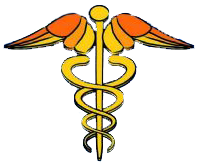The Art of Jin Shin & the TARA Approach: Harmonizing Tools at our Fingertips
By Karen Luedtke
We have the tools to calm, soothe and heal ourselves right at our fingertips. By placing our hands on specific points on our body, we have the ability to stimulate self-healing, as the flow of energy around our body is restored. This may sound strange – if we are unfamiliar with energy work – until we experience a treatment or self-care class for ourselves.
Once we engage with this gentle art, its impact becomes tangible in subtle yet powerful ways.
Our nervous system may respond with a sense of “aaaahhh, it’s time to relax, time to reboot!” Tingling sensations may bring our awareness into parts of our body we had not noticed all day. Often our breathing drops into our belly. And somehow, by the end of a session, we generally find ourselves feeling more grounded and present.
It can still be easy to miss and dismiss these subtle shifts in our experience, especially when these challenge our perception of ourselves and our body.
In our rationally oriented world, we easily discount sensory based information. Yet, learning to recognize the communications of our muscles, skin and connective tissue can take us into a profoundly healing paradigm shift.
“Everything you need for harmony is in the breath and fingers!” ~ Jiro Murai
The Art of Jin Shin
Though perhaps still less known than modalities such as Reiki, Touch for Health or EFT, word is spreading about this subtle art – frequently also known as Jin Shin Jyutsu – as practitioners and clients around the world share their experiences.
This gentle form of acupressure originates from Japan, where it was originally passed down the generations by word of mouth. It fell into decline until the early 1900s, when Jiro Murai revived it while healing himself from a life threatening illness. He then devoted his life to researching the Art of Jin Shin and began to pass it on to his students. One of these was Mary Burmeister, who brought this art to the United States in the 1950s and eventually started teaching it there.
Sometimes known as the ‘Grandmother of Acupuncture’, the Art of Jin Shin is based on twenty-six acupressure sites on each side of the body. These are held in different combinations or ‘flows’ to restore the circulation of life force along the energy pathways of the body. As energy flows are restored, so is the natural self-healing ability of the body.
Jin Shin helps on a holistic level: it can calm the primal part of our brain, down-regulate our nervous system and regenerate our various bodily systems. As such, it promotes balance and harmony in our entire being – body, mind, and spirit.
Above all, the Art of Jin shin is self-care based.
Simple holds and flows can be practiced regularly at home. This can be valuable to follow up on treatments and to engage in preventative health care. It can also help to nip imbalances in the bud with everyday issues such as headaches, indigestion, colds etc.
“The creative power of the entire universe is within us!” ~ Mary Burmeister
The TARA Approach
The Art of Jin Shin lies at the heart of the TARA Approach, short for ‘Tools for Awakening Resources and Awareness’. This modality was compiled by Dr Stephanie Mines to bring together her long-term studies of Jin Shin with Mary Burmeister and her research in the neuro-sciences (see www.tara-approach.org).
The unique contribution of the TARA Approach is its focus on the resolution of shock and trauma.
In particular, it offers the dialogue based adjunct of the Rediscovery Journey. This gentle process of self-witnessing, guided by the practitioner’s attuned questions, allows us to reclaim details of our early lives and to further activate our innate healing capacities: higher brain functions are awakened as our sense of self is resourced and empowered.
“At the heart of us exists a silent pulse of perfect rhythm.” ~ Mary Burmeister
Projects not problems
Rather than addressing problems, the Art of Jin Shin is all about projects. Where problems are limited, projects are open-ended, evoking a sense of process and discovery.
Rather than treating what is out of place, that which is already in alignment is strengthened. Instead of diagnosing and tackling specific conditions, disharmonies are seen to dissipate as a side effect of aiming for an overall sense of harmony.
As such, the Art of Jin Shin can be a valuable complement to bio-medicine, though not intended to replace the need for medical care and comprehensive professional assistance.
Above all, its focus is always on restoring balance. And, the intention is always to replenish the flow of life force – simply by using our fingertips!
Karen Luedtke is a certified coach and body work practitioner ~
supporting you to relax, realign and be the change you want to see
For more info see www.spacioussteps.com and to contact Karen directly click here
Image by Juan Pablo Serrano Arenas
